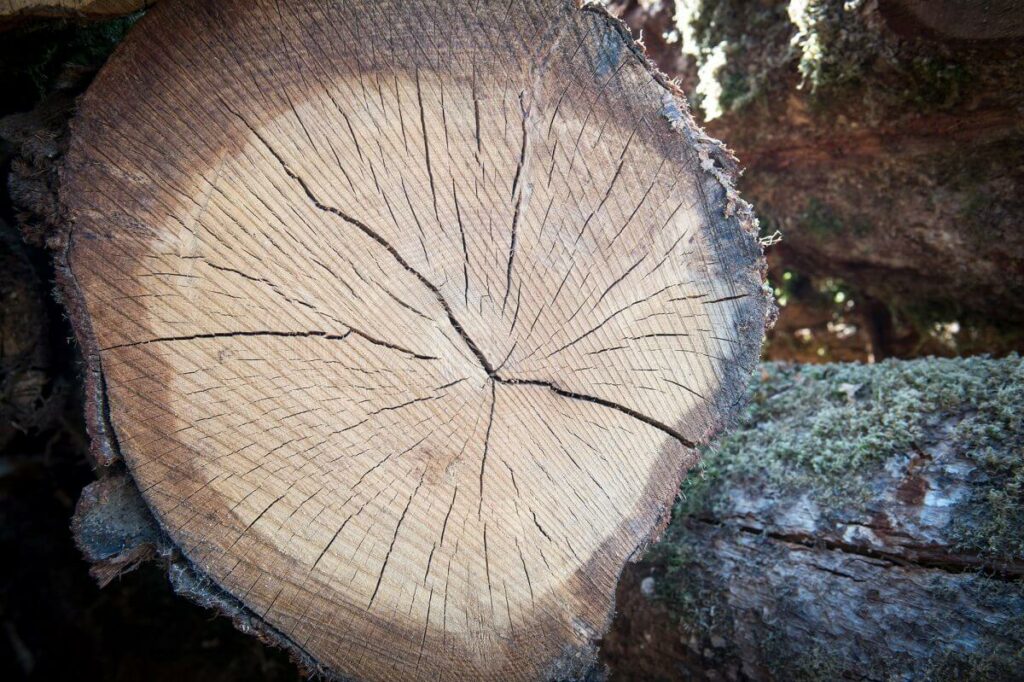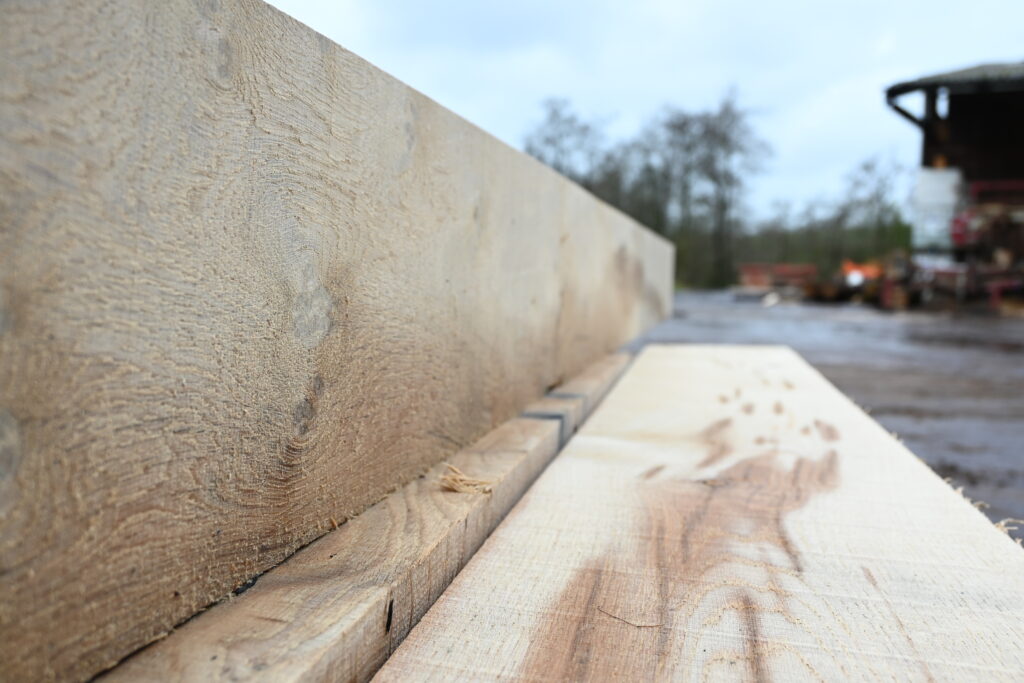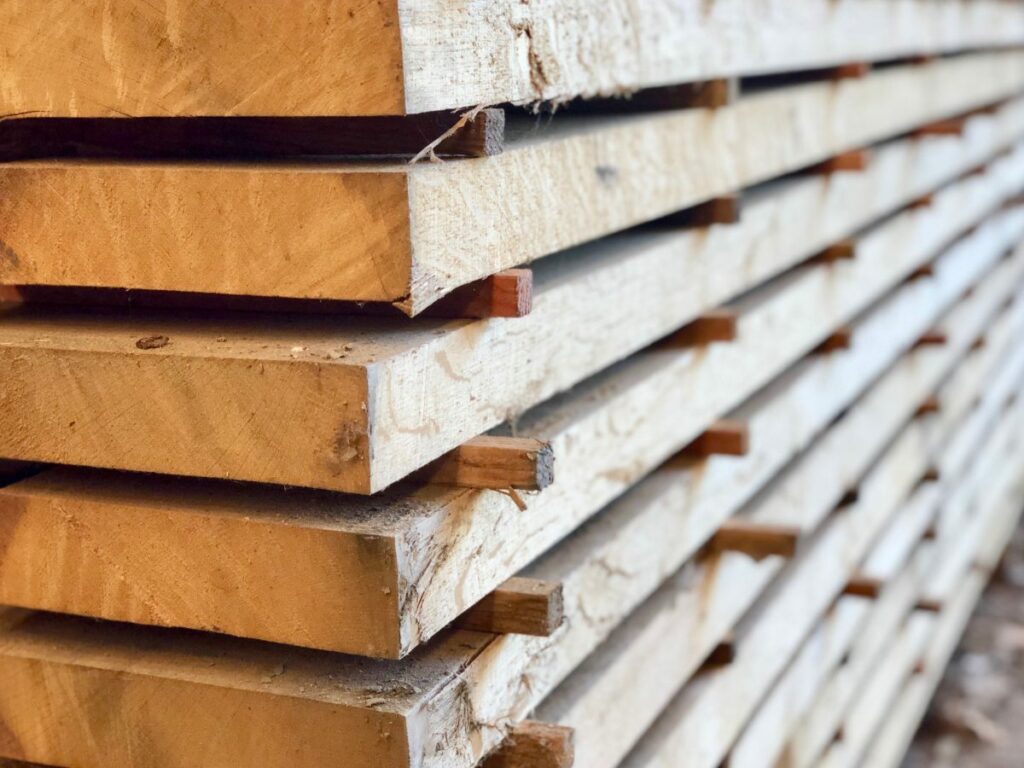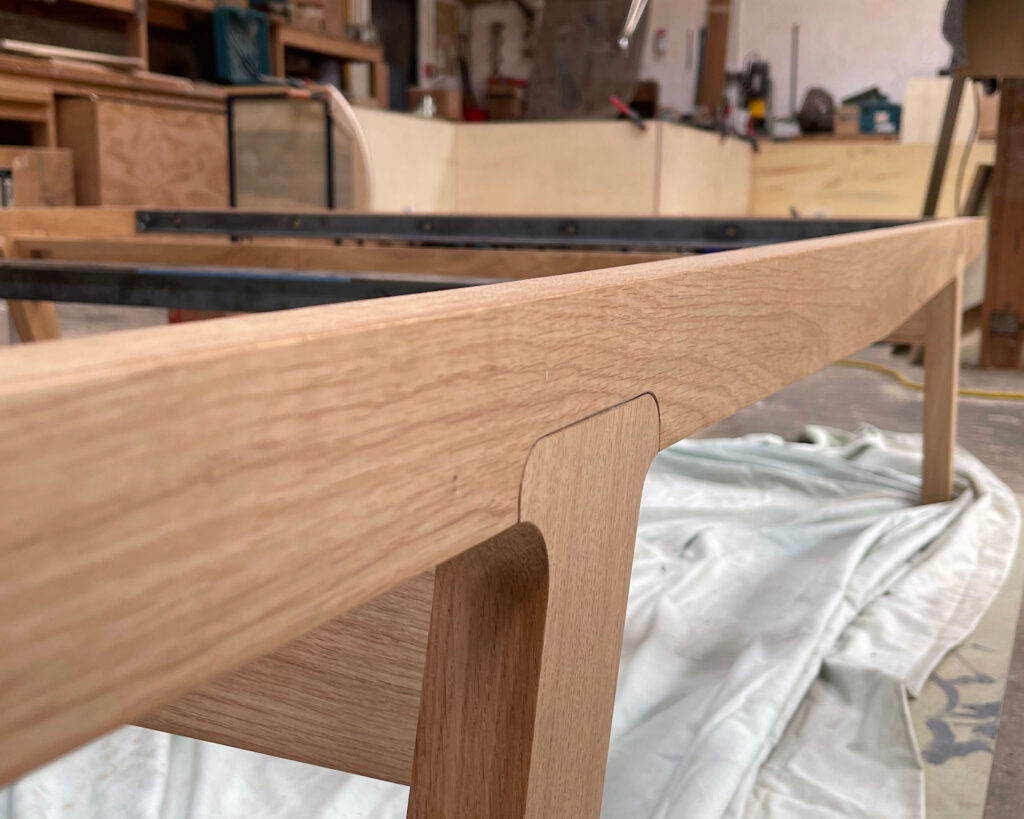
British Oak, Chestnut and Ash
These are three of our great, common, decorative hardwoods that are sometimes confused. This is perhaps because they are all Ring Porous which means that the annual rings are similarly obvious as opposed to Defuse Porous timbers like sycamore and beech.
In this post we will discuss these famous British Timber’s appearance, durability and what they are best used for.
Ash, in its natural state, is paler; a creamy white colour with, sometimes, a darker area in the middle of the tree and no noticeable sapwood. Oak and Chestnut are more often confused as they are a similar fawn colour (with yellowish tones in the sawn state) however they shouldn’t be; chestnut is much lighter in weight, generally has much less sapwood and no visible rays.
All hardwoods have rays but while the rays of Ash and Chestnut are too small to be seen with the naked eye, Oak’s rays are massive and visible on all faces. On the radial or quarter sawn face the rays appear in erratic shapes and are an attractive feature but on the tangential or plain sawn face and on the end grain they are visible as fine parallel lines. These fine lines are weaknesses in oak and when exposed to drying conditions such as sunlight they open into fine cracks or checks.


So which timber is the strongest?
There are also major differences in the technical qualities and uses of these three British Timbers. Chestnut is the softest and weakest and therefore restricted to situations that don’t require much strength or heavy wear. Appropriate uses include external cladding, panelling and some furniture and joinery but not where much strength or hardness is required.
Generally speaking Oak is the strongest and hardest of the three, but Ash is the best at withstanding shock so it is Ash that is best for the handles of tools like axes or shovels. However when selecting a tool handle as well as checking for straight grain and no defects select a handle that was grown fast. Ring porous hardwoods are stronger and denser when grown fast, quite the opposite of softwoods.
Oak and Chestnut are durable British timbers’, but Ash is perishable so unsuitable for external work, so Ash is largely restricted to internal joinery, fittings and furniture.
Oak, being both strong, hard and durable means it has a considerable list of appropriate uses and has been extensively used throughout history.
Nowadays it is used structurally as beams, posts, lintels etc both internally and externally. It is also very suitable for all joinery and fittings including flooring, cladding, panelling and furniture.

